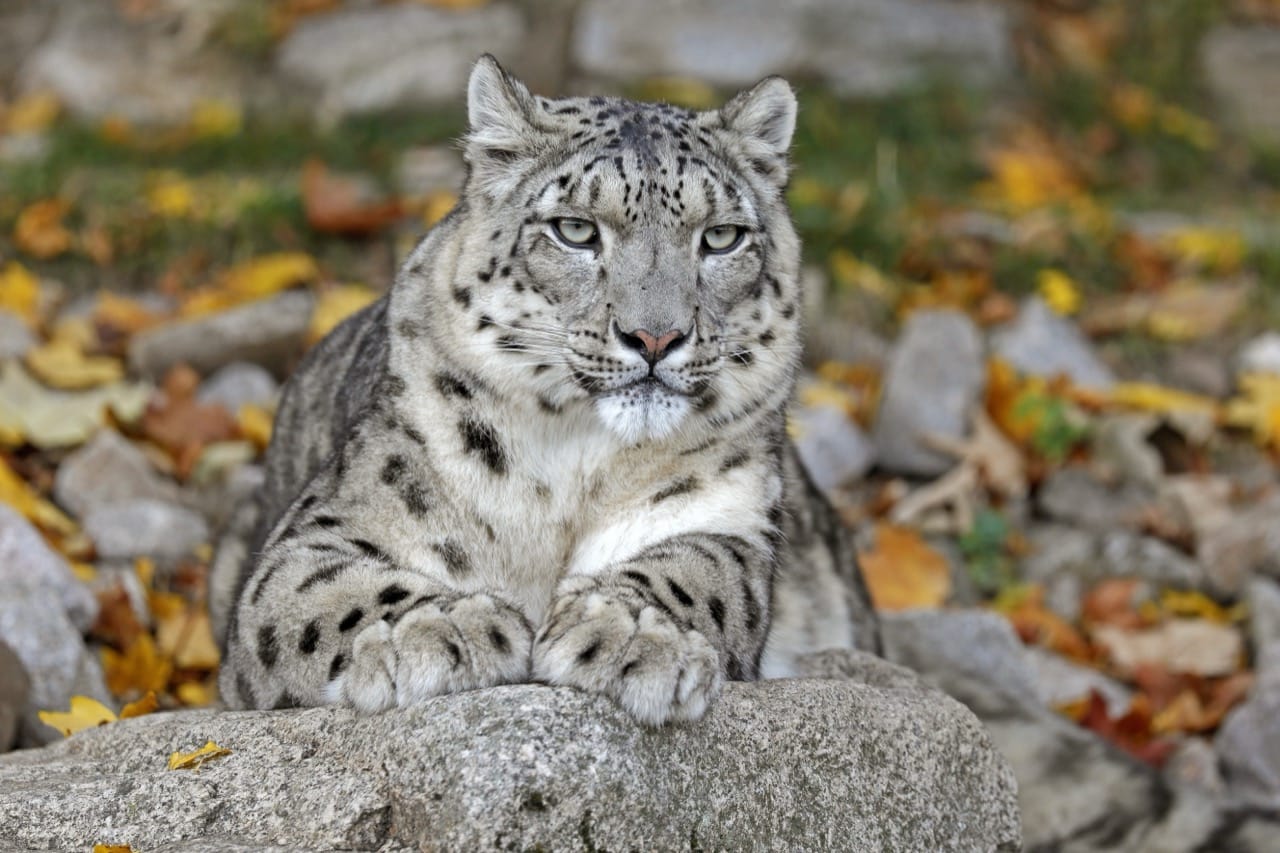The snow leopard, known for its elusive nature and breathtaking beauty, resides in the rugged mountain ranges of Central Asia. Its presence, often just a whisper or hint on the icy wind, captivates the imagination of all who dare to venture into its high-altitude realm. This magnificent cat, with its smoky-gray coat patterned with black rosettes and spots, is perfectly adapted to its harsh environment, embodying the spirit and resilience of the mountains it calls home.
Characteristics / Physical Description
The snow leopard (Panthera uncia) is a medium-sized cat, weighing between 22 and 55 kg, with a body length of up to 130 cm and a tail almost as long. Its fur, thick and woolly, serves as insulation against sub-zero temperatures. The pale grey coat, with its unique pattern of dark rosettes, provides superb camouflage in the snowy and rocky landscapes. Its wide, fur-covered feet act as natural snowshoes, helping it tread softly and silently on snow. Remarkably, the snow leopard’s small rounded ears minimize heat loss, and its powerful build allows it to leap distances of over 50 feet.
Taxonomy and Classification
The snow leopard belongs to the genus Panthera, which includes other big cats like lions, tigers, and jaguars. Classified under the family Felidae, it is part of the order Carnivora. The species was first described scientifically by the naturalist Johann Christian Daniel von Schreber in 1777 as Felis uncia and only later reclassified into the genus Panthera.
Behavior and Social Structure
Snow leopards are solitary creatures, coming together only during the mating season. They are crepuscular, being most active during dawn and dusk. Their territories are vast, spanning several square kilometers, with males typically covering larger areas than females. Communication involves scent markings, scrapes, and vocalizations such as growls and hisses. Despite their size, they are incredibly stealthy, enabling them to ambush prey effectively.
Habitat and Distribution
These cats are found at altitudes ranging from 3,000 to 4,500 meters in the mountain ranges of Central Asia, including the Himalayas, the Tian Shan, and the Altai mountains. Their habitat, characterized by steep terrain, rocky outcrops, and sparse vegetation, spans across 12 countries, including China, Mongolia, India, Nepal, and Bhutan.
Diet and Feeding Habits
Primarily carnivorous, snow leopards prey on a variety of mountain ungulates, such as the blue sheep (bharal) and the ibex. They are opportunistic feeders, also hunting smaller animals like hares and birds. Adapted to their environment, they can survive on a single large kill for two weeks, hiding the carcass and revisiting it periodically.
Breeding and Reproduction
The breeding season for snow leopards is from January to mid-March. After a gestation period of about 90-100 days, the female gives birth to one to five cubs in a secluded den lined with her fur. The cubs are born blind and helpless, gaining sight after seven days and remaining with the mother for up to two years, learning vital survival skills.
Relationship with Humans
Historically revered and feared, the snow leopard has a complex relationship with humans. They are often seen as livestock predators, leading to conflicts with pastoral communities. Conservation efforts are focused on mitigating human-wildlife conflicts through compensation schemes and community-based conservation programs.
Evolutionary History
The evolutionary lineage of the snow leopard is fascinating, with molecular studies suggesting it diverged from the other members of Panthera around 2 million years ago. Its evolutionary adaptations like enhanced respiratory systems, thick fur, and powerful limbs are perfectly suited to its high-altitude environment.
Use as Research Animals
While not typically used in traditional laboratory research, snow leopards are crucial subjects in ecological and conservation studies. They help scientists understand the impacts of climate change on alpine ecosystems and the effectiveness of various conservation strategies.

